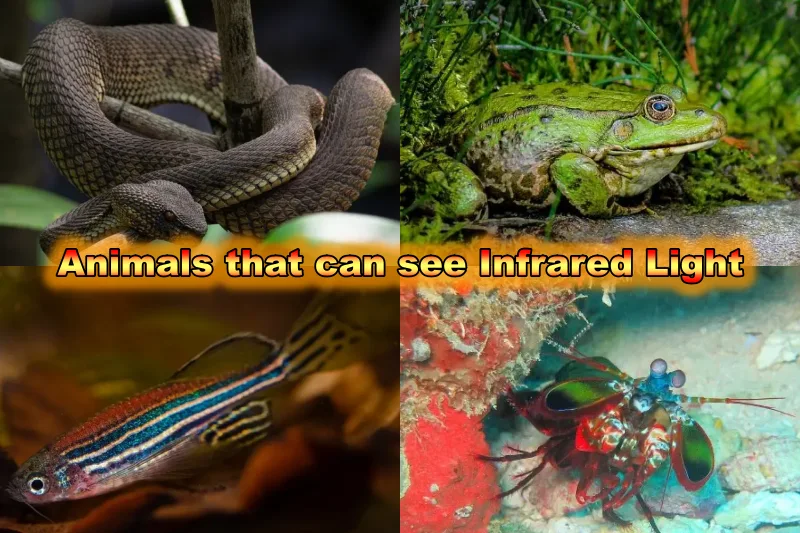In the diverse animal kingdom, every animal has their respective vision range. Some animals can perceive only certain segments of the visible spectrum, while some, like humans, can perceive all.
Some animals can perceive the electromagnetic wavelengths of the ones lying ahead of the visible spectrum and those lying beyond the Infrared Red Rays.
Earlier, we uploaded a write-up about animals that can see Ultraviolet Light. Since then, curious minds have also wanted to know about animals that can see Infrared Light and how they use it. Therefore, in this article, we bring you a list of 10 Animals that can see Infrared Light.
10 Animals that can see Infrared Light
1) Pit Vipers
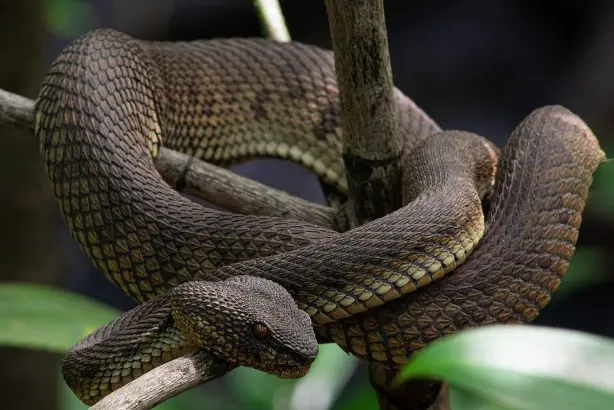
| Subfamily | Crotalinae |
| Size | 30 to 45 cm |
| Life Span | up to 25 years |
| Geographic Location | Eastern Europe eastward through Asia to Japan, China, Indonesia, peninsular India, Nepal, and Sri Lanka |
Pit Vipers are the first animal on our list of Animals that can see Infrared Light. Certain snakes have evolved to use Infrared Vision, and Pit Vipers are among them.
Their faces have holes on either side, called “pits,” which enable them to see Infrared light. Having poor color vision, snakes like pit vipers use their infrared vision to see warm-blooded animals like mice or other smaller prey.
Their brain processes visual and thermal images, and it helps them to track their prey with accuracy and speed.
2) Salmon

| Subfamily | Salmoninae |
| Size | up to 1.5 m |
| Life Span | 2 to 7 years |
| Geographic Location | North America, Iceland, Greenland, Europe, and Russia |
Salmons are migratory fishes. They travel all the way upstream from the seas to spawn and eventually die. They have quite a unique mechanism, a switch, which increases the retina’s ability to see infrared light.
The murky waters where they spawn aren’t ideal for color vision, so they turn on their “night vision.” Their eyes secrete an enzyme that prepares the retina for sharper vision and perceiving infrared light for vision in murky waters.
3) Vampire Bat

| Subfamily | Desmodontinae |
| Size | 6.5-9 cm |
| Life Span | 9 to 20 years |
| Geographic Location | Northern Mexico through Central America and south into the South American countries of Chile, Argentina, and Uruguay |
Vampire Bats are classic examples of Animals that can see Infrared Light. They are so named as they suck blood from the vessels of warm-blooded animals like cattle.
Receptors sensitive to Infrared Light are located on their nose and lips. These sensors help the bats to locate the blood vessels accurately by tracking the warm blood through thermal imaging in the brains. Thus, infrared vision is an essential tool for survival for Vampire Bats.
4) Bullfrog
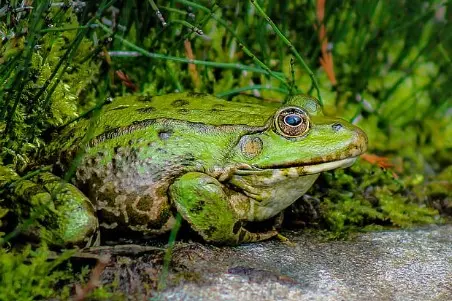
| Scientific Name | Lithobates catesbeianus |
| Size | 9 to 20 cm |
| Life Span | 7 to 10 years |
| Geographic Location | Nova Scotia to central Florida, from the Atlantic coast to Wisconsin, and across the Great Plains to the Rockies |
Certain frog species, like the Bullfrogs, fall among animals that can see Infrared light. Frogs have a habitat that consists of both clear water as well as shallow, murky waters.
The course of evolution has resulted in the occurrence of certain switching mechanisms that switch their vision to Infrared light.
The presence of an enzyme in the eye, Cyp27c1, acts as the switch and super-changes their normal vision to infrared vision. Depending upon the conditions, bullfrogs can switch between normal and infrared vision.
5) Mantis Shrimp

| Order | Stomatopoda |
| Size | 2 to 7 inches |
| Life Span | 2 to 20 years |
| Geographic Location | sub-Antarctic waters |
The next animal on our list of animals that can see Infrared light is an animal with probably the best vision in the world.
The Mantis Shrimp, with its vibrant coloration and strong claws, dwelling in crevices and holes of rocky undersurface, has almost 16 photoreceptor cells to detect almost every form of light, including Infrared.
The use of infrared vision might be related to signaling, both for mating or danger. They can even see polarized light, which places their vision above all beings.
6) Guppies
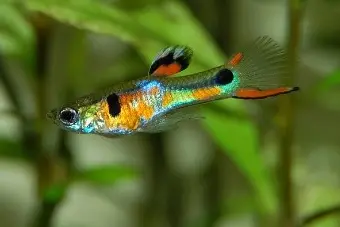
| Scientific Name | Poecilia reticulata |
| Size | 1.5 to 6 cm |
| Life Span | up to 2 years |
| Geographic Location | all over the world |
Guppies are one of the most common aquarium freshwater fishes. In comparison to oceans, fresh waters exhibit increased turbidity.
This causes suspended particles and dissolved organic material to scatter and absorb short- and mid-wavelength spectrum components more intensely.
Consequently, there is a trend for longer wavelengths in underwater lighting. The spectral sensitivity of freshwater fish’s eyes has shifted following this adaptation toward longer wavelengths like near Infrared.
Long-wave red and near-infrared (NIR) light may predominate in shallow and turbid waters.
Therefore, spectral sensitivities in the red and near-infrared region could be indicative of fish species’ evolutionary adaptations to such intensely turbid environments.
7) Zebrafish
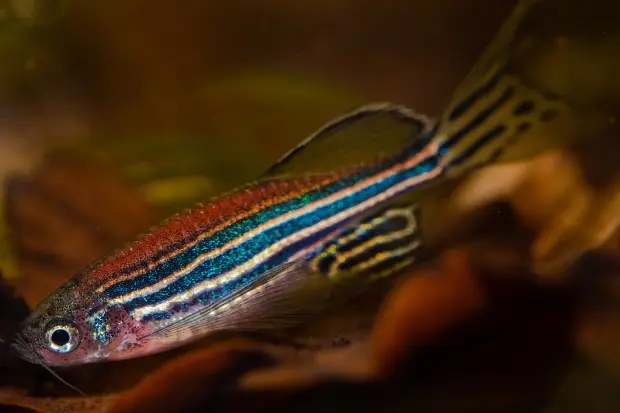
| Scientific Name | Danio rerio |
| Size | 2.5 to 4 cm |
| Life Span | up to 3 years |
| Geographic Location | India, Pakistan, Bangladesh, Nepal, and Bhutan |
Another popular fish in the freshwater aquarium hobby is Zebrafish. They have a vision mechanism quite similar to Bullfrogs.
Driven by the enzyme Cyp27c1, which also acts as a switch, the vision in Zebrafish can conveniently shift to infrared for vision in turbid freshwaters.
Since most of the mid and short-wavelength light gets absorbed, infrared vision turns out to be the best, suggesting their evolutionary adaptation.
8) Boa
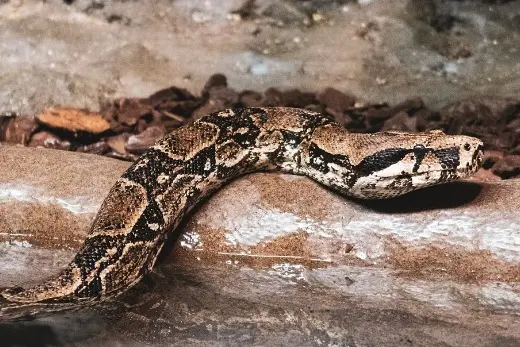
| Scientific Name | Boa constrictor |
| Size | 0.91 to 4.45 m |
| Life Span | 30+ years |
| Geographic Location | India, Pakistan, Bangladesh, Nepal, and Bhutan |
The Boa and the Python family, along with the Pit Vipers from the sole snake community, are capable of sensing infrared light. These snakes have a pit or a hole in the face containing special sensory cells that can pick up infrared light.
This light is used to form a thermal image in the brain that helps the snake to accurately track their preys, which in most cases are warm-blooded animals.
9) Cichlids
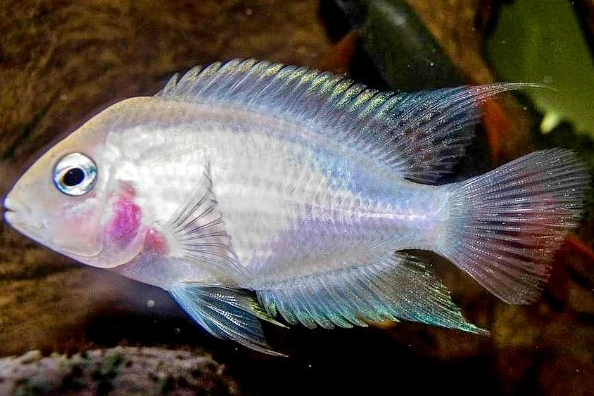
| Family | Cichlidae |
| Size | 4 to 90 cm |
| Life Span | 10-20 years |
| Geographic Location | Worldwide |
Cichlids, with their wide array of species and colorations, make one of the finest fishes among aquarium hobbyists. Mostly found in African lakes and shallow waters, the habitat of cichlids mostly contains rock and their crevices.
They are small crustacean feeders, like freshwater shrimps. These shrimps reflect near Infrared (NIR wavelength). Being NIR sensitive, cichlids can spot their prey in shallow waters or the dark crevices of rocks.
10) Pythons

| Family | Pythonidae |
| Size | 5 to 10 m |
| Life Span | up to 30 years |
| Geographic Location | Africa, Asia, and Australia |
Being the one among the two families of snakes that can perceive Infrared, Pythons are the last animal in our today’s list of animals that can see Infrared light. Like Boas and Pit Vipers, they have holes in their face, one on either side, called “pits,” which are Infrared Sensitive.
Their brain processes it to form a thermal image of their prey ahead of them, which helps them to accurately strike and coil around their prey, causing its death. Infrared sensitivity is essential for the hunting and navigation of pythons, boas, and Pit vipers.
Here, we conclude our article on 10 Animals that can see Infrared Light. Stay connected to us to receive many more such informative articles shortly. Until then, goodbye.
Also Read:

Meet Monty, the visionary founder of How It See, being an engineering student, he’s fueled by an insatiable curiosity about the world around him. He is captivated by an eclectic correlation between animal groups, science, and nature, and this fascination drives his quest for understanding.
After completing his degree, he’s set on a mission to delve deep into the realm of nature, accumulating knowledge to share with you through his writing. In the meantime, he loves to watch anime and read anime.
